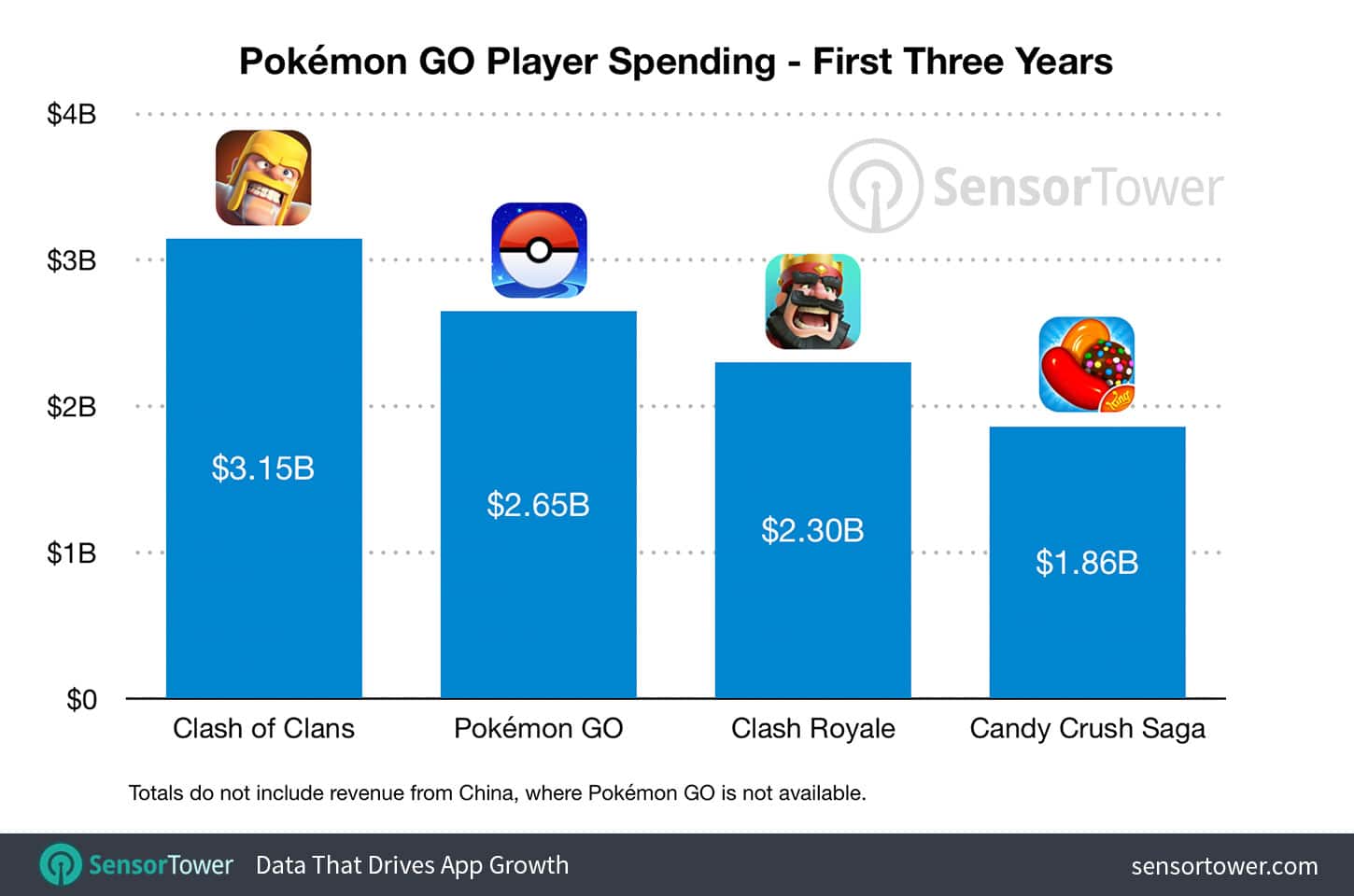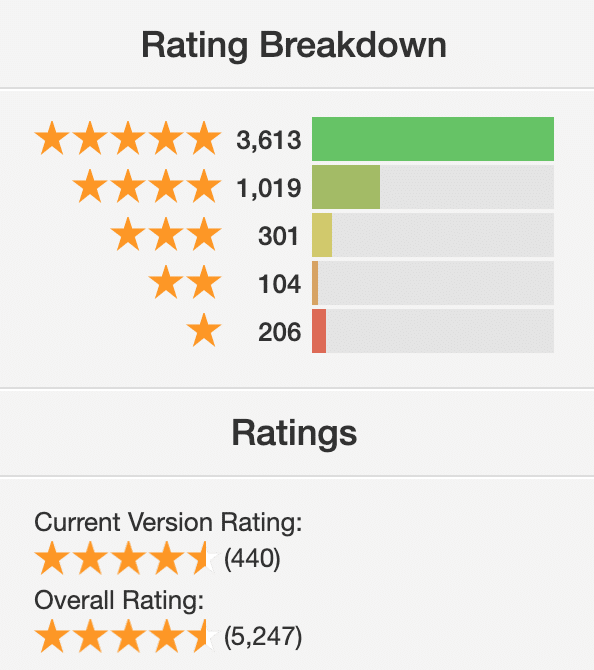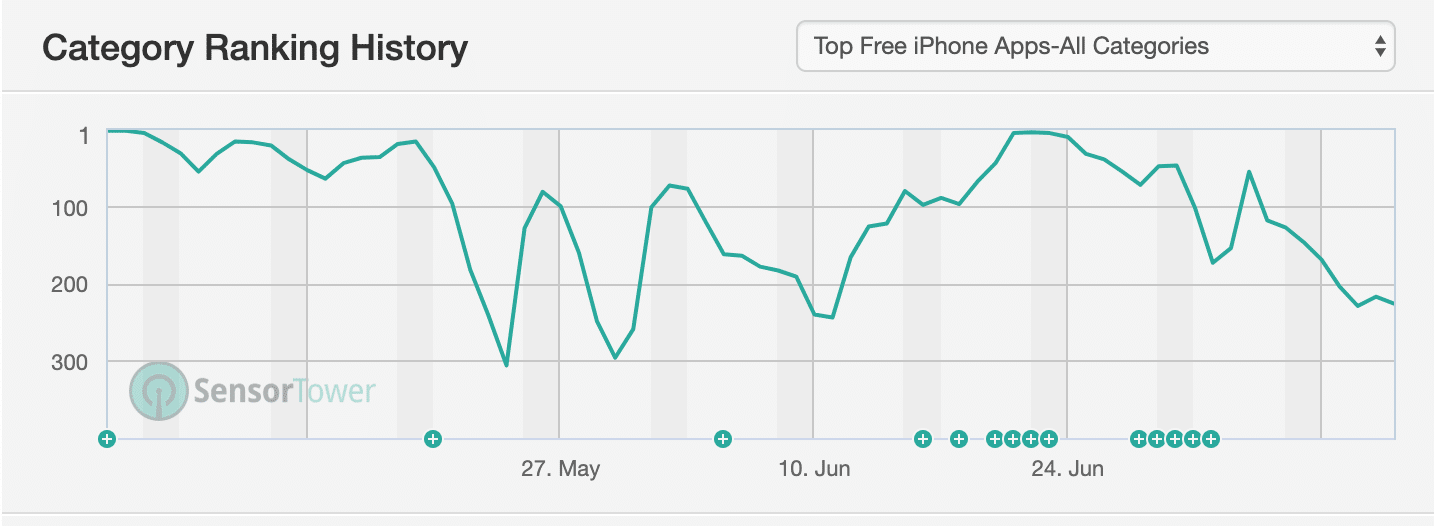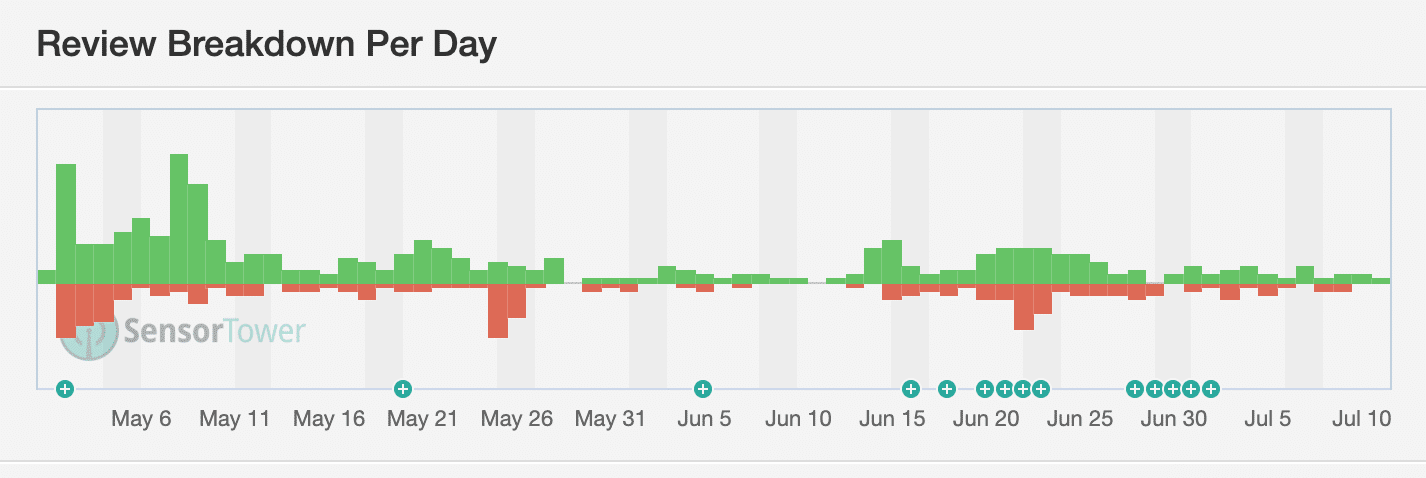
Data Point of the Week is AR Insider’s dive into the latest spatial computing figures. It includes data points, along with narrative insights and takeaways. For an indexed collection of data and reports, subscribe to ARtillery Pro.
As we pass Pokemon Go’s (PGO) third birthday on July 6, evidence emerges of its lifetime revenue total. Sensor tower estimates total revenues of $2.65 billion, on pace for $3 billion by the end of 2019. This notably ranks the game ahead of Candy Crush and Clash Royale (see below).
Further putting things in perspective, estimated 2019 year-to-date gross revenue is $395 million, up 19 percent year over year. Daily average revenue since launch is $2.4 million, and its average revenue per player (ARPU) is $5, corresponding to 521 million downloads.

Meanwhile, there are questions about whether this should be counted as AR revenue. And that’s tied to the broader discussion of if the game itself constitutes AR. We believe it is AR, as reflected in our past commentary and the market sizing of our research arm ARtillery Intelligence.
That belief is tied to philosophies about broadening AR’s definitions beyond the narrow scope of SLAM-based graphical overlays. Pokemon Go’s geographically-informed gameplay fits this broad definition of augmentation, as does other modalities we’re examining such as hearables.
Back to revenues, another question that emerges is how the highly anticipated Harry Potter Wizards Unite (carrying PGOs architecture and game mechanics) is tracking to its revenue growth. It’s a bit behind, but still successful in its own right. In fairness, PGO has big shoes to fill.
As we’ve examined, HPWU’s opening weekend saw 200K downloads and $300K in revenue. That pace was validated in first-week figures of 6.5 million downloads and $3 million in revenue, tracking behind PGOs 38.5 million downloads and $58 million during the same period.
From this, we can calculate per-player (ARPU) spending during the same period, where PGOs $1.50 eclipses HPWU’s $.46. As noted, PGO’s lifetime ARPU rose to $5, indicating potential growth in HPWU per-player spending as momentum grows to level up via in-app purchases.
As for player reception, the professional reviews are mixed (sometimes damning), but player reviews aren’t as bad. The true performance — in revenue and in player engagement — will have to evaluated over a longer timeframe. But these early signals are telling. We’ll keep watching.
For deeper XR data and intelligence, join ARtillery PRO and subscribe to the free AR Insider Weekly newsletter.
Disclosure: AR Insider has no financial stake in the companies mentioned in this post, nor received payment for its production. Disclosure and ethics policy can be seen here.
Header Image Credit: Google



